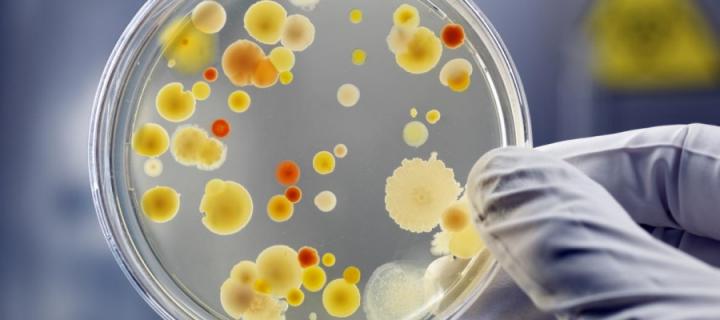Microbial Systems and AMR
Understanding how living systems work is essential if we are to better understand how cells function and why diseases occur.

SynthSys started as a centre focused on research into the biology underpinning living systems (plants, yeast, human cells) and continues to deliver excellence in research in that field today. We aim to understand how genes and proteins interact and endow cells (e.g. bacteria, fungi, algae) with the ability to sense, move, grow and divide.
Vision
Our goal is to better understand how microbial systems behave, how Antimicrobial and Antifungal Resistance develops, and to explore ways in which we might combat this. Only a system-based multi-scale approach, from single molecules to population, can achieve the depth of knowledge essential to understand AMR.
Expertise
We have an extensive program of interdisciplinary research and specialize in:
- Single-cell assays: Light and fluorescence microscopy and the novel use of microfluidics for quantitative phenotyping and for generating fluctuating extracellular environments
- Multi-scale and rule-based mathematical modelling: from genetic networks to predictions of growth rates and physiological rates in microbes (including non growing ones)
- Stochastic gene expression: mathematical modelling, statistical inference, and single-cell measurements
- Spatial mathematical modelling: pattern formation, macromolecular crowding, stochastic simulation algorithms for diffusion, and the analysis of high-resolution capture (Hi-C) data
- Antimicrobial Resistance: we combine approaches based on single cella nd genome wide data to understand the response of bacteria to different temporal and spatial regimens of antibiotics
- Antifungal resistance: We collect and analyze genome-scale datasets to understand how fungi dynamically reorganize their RNA and protein to adapt to environmental change.
- Evolution of AMR: We study the evolutionary dynamics of resistance using a combination of modelling, experiments, and bioinformatics.
- Whole cell biosensors: We use whole microbial cells for fast, low power sensing of analytes of interest developing rapid R&D cycles for sensing of novel analytes (including those currently difficult or impossible to sense).
We have close links with Edinburgh Infectious Diseases, Edinburgh Plant Sciences, the MRC Centre for Regenerative Medicine, and the Scottish Microelectronics Centre.
Case Studies
Exploring fungal systems for human health

How do fungi survive in a changing environment, when they cannot move away from danger or towards food? How do infectious fungi grow in a human body and fight our immune defences?
Dr Edward Wallace and his lab study how fungi respond to their environment, focusing on their molecular mechanisms. They collect and analyze genome-scale datasets to understand how fungi dynamically reorganize their RNA and protein to adapt to environmental change.
Fungi have a toolbox of RNA and protein: when their environment changes they get out some tools and put others away. For example, when fungi are hot, they shut down heat-sensitive processes, and concentrate on making proteins that protect them against heat.
We don’t know very much about what happens inside an infectious fungus when it floats through the air, lands in a hot, moist, human lung, and starts an infection. The lab is studying Cryptococcus neoformans, a different species of yeast, which kills at least 600,000 people per year. Cryptococcus infections are particularly dangerous for those with immune systems weakened by infections such as HIV, or immune-suppressing drugs such as those needed for organ transplants.
In the long term, this understanding could help us design better diagnosis and treatments for fungal infections.
https://ewallace.github.io/projects/home/home
For further information about this research theme, please contact
Prof Meriem el Karoui
Professor of Bacterial Systems Biology

Contact details
- Email: Meriem.Elkaroui@ed.ac.uk
See also

